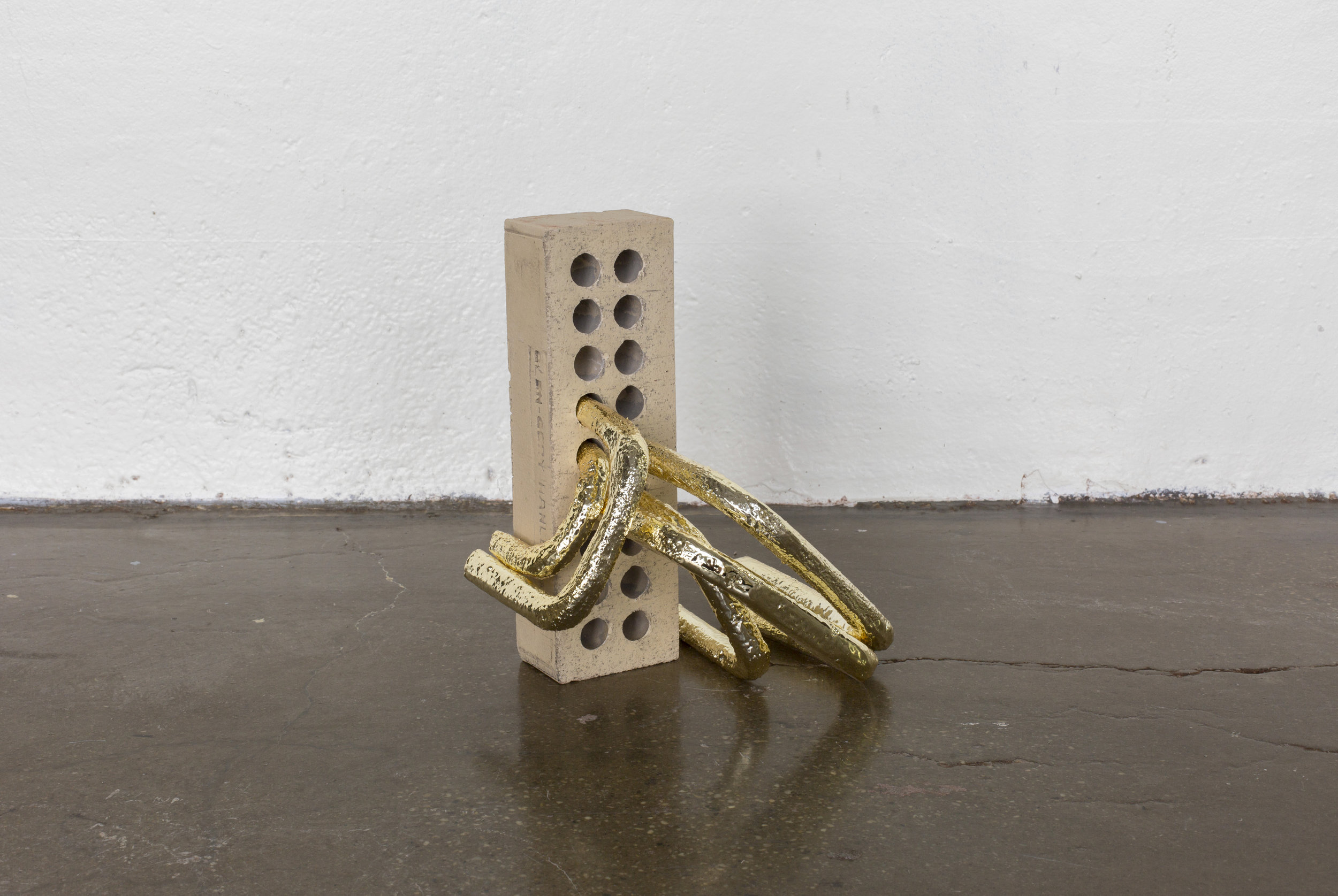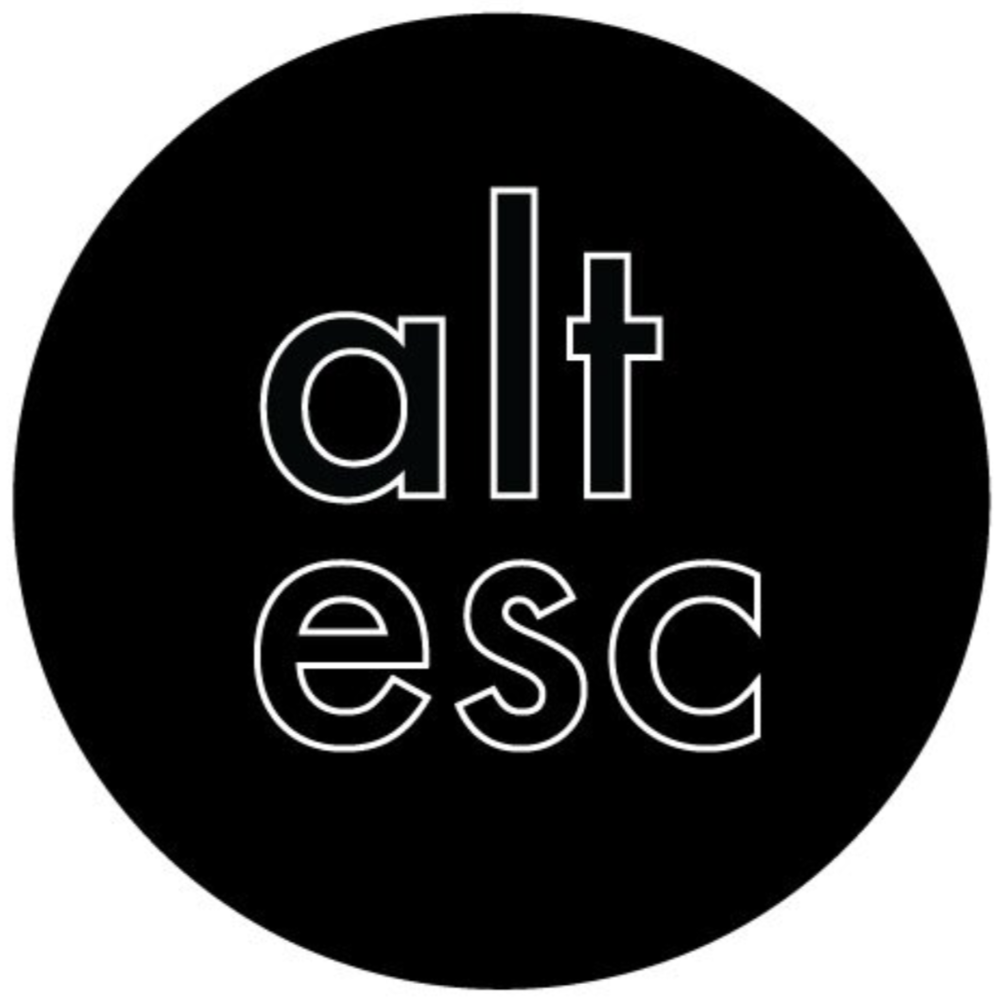ANDY RALPH
We interviewed Andy Ralph in his Brooklyn studio, to the sound of massager motors continuously whirring in the background. Andy is a mechanic and an engineer - he takes parts from common household and hardware objects (frequently massager motos) and inserts them into something else, creating cybernetic hybrid sculptures. His works range from alternate reality cityscapes, to pulsating street cones. We talked about the apocalypse, metal arm attachments, and our relationship with objects and space. We curated him in a group show at Small Editions (on view November 18, 2016 - January 14, 2017). He also has an upcoming solo show at New Release Gallery in February 2017.








So, give us a quick background.
I grew up in a small town in Southern California and moved further south to San Diego where I earned my undergraduate degree at a liberal arts school. While there I studied under Jim Skalman, an installation artist who taught me how to better communicate my ideas by disrupting physical space. I’ve been in Brooklyn for coming on six years now.
Have you had residencies?
Yeah, I went to OxBow School of Art in Michigan and last year I spent time at the Teton Artlab in Wyoming. Canoeing on the OxBow lagoon under moonlight and getting a steam facial from a Yellowstone geyser really enhanced my experiences in both places.
Did you get to make nice work?
I did, but the relationships I made are what really stand out to me now. At OxBow, I made friends with a many different artists and writers in residency and in Wyoming I got to hang with several local plein air painters. They would take their easels outside and paint the Teton landscape and wildlife which is just epic. They’d invite me to drink whiskey with them and talk or just watch them work. I’ve never had an experience sitting with a painter out in the open like that, witnessing them interpreting the light. Then they’d come to my studio and watch me chop up things I’d found in thrift stores.
What for the first piece you’ve ever made that was an “ah” moment?
I think it was a drawing of a kitchen faucet on black paper made with white and yellow colored pencils. I was trying to replicate reflection and even though it wasn’t photorealistic or anything, I just loved doing it.
Are you a good draftsman?
Not really. I dedicate a lot of time to drawing but I’d rather manipulate objects and work with raw materials. And it’s hard to sit down and be still and concentrate on one thing intensely while holding a pencil. I need circulation in my body, I need to walk around and stretch and move within a space.
So why do you what you do?
I go back and forth with this one. Like all humans, I began by making artwork for myself, exploring materials and learning techniques. I’ve learned over time that art making is more than just process; it’s the imagination’s way of communicating universal truths, of connecting disparate ideas. I want to make work that introduces new ways of seeing for everyone, including myself.
I think your work is the kind that needs an audience. What are your themes?
I’m interested in what constitutes “progress.” I like the way science fiction presents an alternate and often fast approaching reality. I also focus on cybernetics and the way readymade, everyday objects are assisting our day to day.
What are you working on now?
I’m working on a grouping that is rooted in the idea of viruses: both biological and technological. Like, viral internet infections and human pandemic infections. The idea of rapid reproduction and self-replicating beings...
Are we living in the times of the apocalypse?
I sometimes joke about that, but I don't think we are. There are so many horrible things happening right now in the world, but I think at home we have a lot more suffering to do before we can say it's the end times. We keep our distance through TV screens and Facebook feeds and none of it has completely slammed the breaks no our personal schedules.
When did you get into robotics?
I got into robotics when I wanted to see movement in my sculptures. I never wanted to make Paul McCarthy/Jordan Wolfson/Disney World style robotics, built from the ground up, even though I think those are rad. My robots have a pre-existence and are lifted from off the shelf machines. I scrap them together without a background in electrical engineering or computer science. They are kinetic assemblages.
How do you go from sculpture to kinetic works?
Sometimes a sculpture needs movement to communicate properly. That’s something I think about all day and all night. Once I know the work needs to move, I have to solve the problem of "how." It’s always like this for me; I have a desire to make something and I figure it out by using IRL humans or YouTube.
Why are everyday objects important to you?
Because they are an extension of my life and yours. Including these everyday objects in my work allows quicker associations and understandings - as axis points. The objects are a starting point, a way to help me engage with an audience I’ve never met but one that shares a common language.
Are these works landscapes?
I’ve been seeing these as giant rehabilitation centers and futuristic cities that have architectural relics reduced into miniatures and placed around abandoned platforms. The cities are vacant and static save for massage machines mounted right in the middle of it all. These massagers, they show up in a lot of the new imagery. The massagers are mass-produced and here they get to massage other mass-produced objects.
I’m using the bricks as the found-object foundation to extrude the golden nodes. Each “Brick Node” is an individual piece with elegant yet fraudulent information nodes that are starting and stopping like a slightly severed Wi-Fi cable or an unknown symbol or hieroglyphic, you may seem to understand.
What’s your favorite sci-fi landscape?
Probably the prehistoric landscape when the monolith appears in the beginning of “Space Odyssey.” In the blank rocky setting the monolith is found by cavemen. I like the contrast between the unseen technological civilization who created the monolith and the group of private humans confused by it, and in that moment these cavemen start to realize their potential. I also like the Death Star floating alone in space and the Ewok village built up in the trees.
How did you learn how to make motors?
I’ve never made a motor from scratch. I appropriate motors. When I'm scheming, I go into the world looking for a motor that will suit my needs, something that already exists and something that is strongly built. Kitchen appliances and personal massagers are the ticket right now.
What are the pieces “Yield & Purge” about?
These are handmade street signposts folded into the shape of a street sign with black tubes dangling. They’re hard to describe and they are the first sculptural wall work I've made in quite some time. This work and all of my work is about the grind, the repetition and the monotony. I drilled all of these holes to mimic street signposts, subtly bringing awareness to repetitive motions.
So why spend all this time making marks if most of the art is viewed digitally these days?
I don't make sculpture to be viewed online. I do make “Action Sample” videos and stop motion gifs and I’m not discounting digital art at all, but I’m a sculptor and the relationship between human, object and space matters first and foremost.
How do you feel about being an artist in this age and time?
I don’t know any artist worth their salt who hasn’t felt guilty at some point for some reason. You wonder if what you’re doing matters when there are so many other ways to make a tangible difference in this shattered world. Here I am, an artist in my studio making work for the next show, work ultimately to be viewed by the art community while a humanitarian aid truck is being blown to pieces. I had this conversation with Richard Tuttle recently. He brought up the fact that if you were an artist in a small tribe amidst a seamstress, a cook, a healer, etc., you would be directly helping everyone as the one artist in that tribe. If you can imagine New York as a collection of tribes, you might not pull your hair out.


